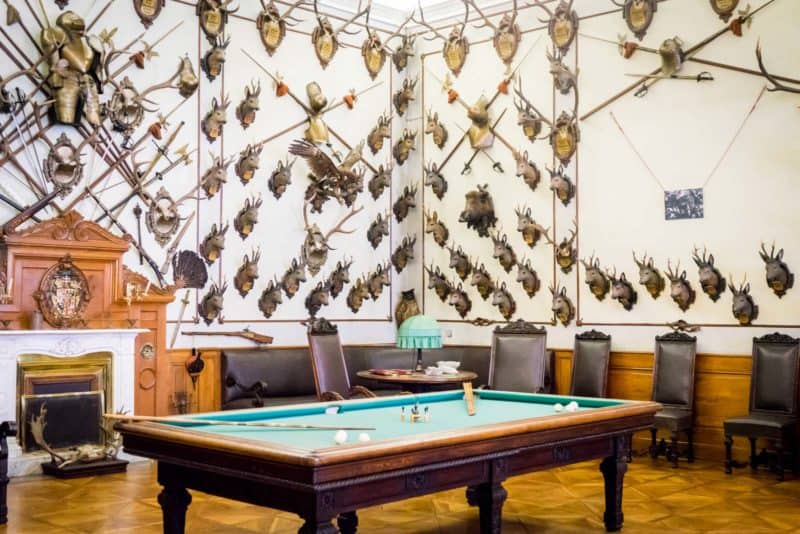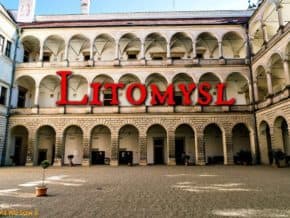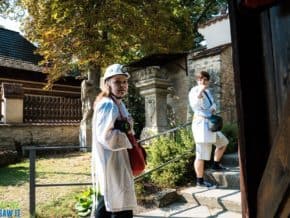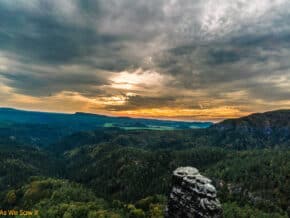Spoiled for choice. If there was one thing we learned during our Czech Republic road trip, it's that the country is so full of pretty towns that it’s hard to choose where to go!
Working with Visit Czechia, we created a 3-week itinerary based around the country’s UNESCO sites. And being that Kromeriz is midway between Olomouc and Brno off the D1 motorway—only 45 minutes each way—that made it an even more appealing stop!
The Story of Kromeriz

Renowned for its amazing architecture, culture, and flower-filled landscape, nearly 30,000 people call Kromeriz home. The town is a riot of flowers, with exquisite fountains, a stately chateau, and a world-class botanical park.
Standing at the crossroads of important trading routes, the now-popular Kroměříž began its existence as a humble market town about 1000 years ago. In the late 13th century, the Bishop of Olomouc built his summer residence here, and he made sure it was regal enough to reflect his church’s power and wealth. This worked out well for him, because the resulting increase in population helped it grow into a wealthy and influential town.
The archbishop’s residence made Kromeriz a target for religious wars over the centuries. Its devastation in the 14th and 17th centuries prompted extensive rebuilding, most notably the picturesque Renaissance-era arcades that surround the city’s central town square. Sure, it’s pretty, but that was not what makes Kromeriz so attractive to visitors.
💡 FUN FACT: The Czech alphabet has 42 letters, including some special characters and diacritics that are unique to the language. Language geek that I am, I asked how to pronounce Kroměříž correctly. Turns out that it’s not Krom-a-ritz; it’s actually pronounced Krom-yehr-zheesh, and Czechs tend to roll their r's. It's quite a tongue-twister!
The Archbishop’s Palace

We met up with Mr. Zdeněk Urbanovský, who worked with Eastern Moravia Tourism and knew the area intimately. He began by taking us to the town's crown jewel: the magnificent Archbishop's Chateau. UNESCO calls the gardens and castle of Kroměříž “an exceptionally complete and well-preserved example of a European Baroque princely residence and its gardens.”
Unfortunately, visitors are forbidden from taking photos inside the building. All the interior photos in this article are courtesy of our guide.
Get visiting information here.
Money can buy influence, including positions within the Catholic Church, as demonstrated by Charles II of Liechtenstein. After purchasing the title of Bishop of Olomouc, he lavishly decorated the chateau, enhancing nearly 40 rooms and halls to reflect the Church's prestige.
One of his standout achievements was amassing a phenomenal collection of Central European paintings from the 15th to 18th centuries, featuring masterpieces by Van Dyck and Titian. Talk about a way to impress!
The Assembly Hall is an excess of opulence, boasting an ornately painted ceiling and twenty-two crystal chandeliers. It was so impressive that it hosted meetings of the Imperial Council of the Habsburg monarchy instead of in Vienna. It's also been featured in films like “Amadeus,” which just goes to show how stunning the room really is.

But it wasn't all work and no play in archbishop land. They had their share of entertainment, like a unique room that combined a pool table with hunting decor—complete with animal heads on the walls. And let’s not forget the wine cellar—I mean, what kind of Catholic archbishop would he be without a good selection of fine wines?
ⓘ PRO TIP: You can take a guided tour of the extensive wine cellar beneath the castle. It's open year-round. Stop by the wine shops in the castle and cellars to try some of the best sacramental wines and pick up some bottles from the area.
Get a bird's-eye view of Kromeriz from the castle tower

After our tour, we detoured to the 34-meter-high castle tower, built on the foundations of a previous castle.
With no one around to police our photography, we braved the rainy weather and trudged up 206 steps to the tower's open-air balcony. Our reward was an unforgettable 360° view of the town and surrounding countryside.
Church of St. Moritz
Nearby is the Church of St. Moritz, one of the largest Gothic structures in the Czech Republic. It was built for Bruno von Schauenburg, the Bishop of Olomouc and founder of the town. He has a fine-looking tomb there.

This church and the nearby Church of St. John the Baptist share a secret: Hidden within their walls is a passageway that leads all the way to the chateau. They say the bishop had it built so he could celebrate mass without having to go outside in bad weather.

Černý Orel Brewery

Before driving to the nearby gardens, we stopped in Černý Orel (The Black Eagle) for lunch. It is well known for its tasty microbrews and excellent cuisine.
The 300-year-old historic building was once a pharmacy. You can stay in their guesthouse or hotel, arrange a visit to their brewery, or try the handmade chocolates they produce. We bought a small assortment of chocolates and shared them later that night. I regret not buying more; they were excellent!

Kroměříž Archbishop's Gardens

After lunch, it was time to enjoy Kromeriz's legendary flower gardens. The archbishop established a private ornamental garden in the 17th century, but now it's open to the public. The garden features fountains and statues, a collection of unusual trees and plants, meandering paths, and ornamental flower gardens with symmetrical designs. The designs change every year, but I wonder how much people notice, considering the impressive centerpiece.
No one can miss that snow-white pavilion standing in the center of the garden. Inside, a Foucault’s Pendulum swings in its center. I must have been one of the few who enjoyed watching it; the other visitors seemed more interested in the ornately tiled rooms around the perimeter.

A 244-meter colonnade runs along one side of the garden, and it is said that you can stand at one end and speak to someone at the other end in a normal voice. We tried it but didn't have much success. Rather than try to make it work, we climbed a nearby staircase and found ourselves on the roof of the colonnade. It offered a fabulous view of the patterns of flowers and pathways, plus the occasional Greek or Roman god for accent.
Call me old-fashioned, but I found it just a little disconcerting that a Catholic bishop actually wanted statues of pagan gods in his garden. Good thing the Church never had another inquisition to punish him for it.
Moving on. As nice as the gardens were, this plant lover preferred the historical greenhouses, partly because of the lush greenery and partly because there was a wedding photo shoot going on in one of them. Hungary, Taiwan, Cambodia… it seems we encounter weddings wherever we go! We really enjoy seeing happy people.

ArcheoSkanzen
Unless you enjoy gardens, Kromeriz really doesn’t need a full day, especially when it’s rainy. We left it behind and drove through the drizzle to the town of Modra for a unique view into the area’s history. ArcheoSkanzen is an open-air archeological site that includes a full-scale replica of a 9th-century Slavic fortified settlement of Great Moravia.
Under other circumstances, it would have been fun to explore the complex because it was based on actual objects found during archaeological excavations. Alas, it was too wet and too late in the day for us to see. Visitors can also see demonstrations of folk crafts and cultural events inspired by the ancient Slavs. There is even a museum with finds and the remains of an early medieval church.
But no, not today. Zdenek still had another place to show us after this. We turned our backs and entered the newly opened (September 2016) Center for Slovakian Traditions. Zdenek approached the desk to ask for a tour.

The center was still in its infancy and not fully staffed or equipped, but what we saw looked promising:
- An interesting display of traditional costumes and crafts from various Slovakian regions.

Skanzen also had:
- A Moravian wine museum, which is on the local wine trail’s wineries and distilleries. Here, visitors can not only get acquainted with the process of burning fruit and viticulture history, but they can also taste two products typical of the local region—fruit spirits and wine.
- A regional produce shop (local crafts, dried fruits, ciders, wine bar, and café)

Moravian wine. It's not about the beer here.

I'm sure you're aware that the Czech Republic is well-known for its beer. What you may not know is that the country produces excellent reds and whites as well. Here, high-end dispensers hold 104 varieties of regional wines. You use a key card and pay according to how much you put in the glass.
Curious to taste some new-to-me regional grape varieties, I happily volunteered to sample a few of the vintages. Unfortunately, the Czech zero-tolerance policy on drinking and driving meant that my travel companions were not permitted to participate.
They would have done so if we had intended to stay at the adjacent Skanzen Hotel.

Here's what I liked best about this place: They have a public distillery. What a brilliant idea! Locals have been making their own hooch for years and not paying the required duty to the authorities. It's not as cheap as doing it yourself at home, of course. But I guess it's worth the extra money to save some time and effort. Just bring in your fruit, pay the fees and taxes, and let them do the work!
I guess their philosophy is that, if you can't beat them, change the rules and help them play the game.
Velehrad Monastery

Finally, Zdenek brought us to the town of Velehrad, which was the first place Pope John Paul II visited after the fall of Communism. Christianity came to this part of Europe over 1150 years ago, when two Greeks arrived in this village to preach the faith in the local Slavic language.
I imagine the land hasn't changed much in the last 1150 years, though the buildings certainly have.
Cyril and Methodius had a massive effect on both faith and learning in this part of Europe. Methodius translated almost all of the Holy Bible into Slavonic, and Cyril created a new alphabet (Cyrillic) to help him do that. The Russians still use it. If you take a close look at Cyrillic letters, you will see their resemblance to the Greek Cyril grew up with.
By the way, Czechs don't use Cyrillic, so you can read road signs without any problem. Sorry, Cyril.
The upshot of all of this history is that Velehrad Monastery and its basilica are a pilgrimage site and the spiritual heart of Czechia. No wonder there's a monastery here. The country even has a national holiday to commemorate Saints Cyril and Methodius.

Velehrad Basilica of the Assumption and St Cyril and Methodius
The basilica has been standing on this site since the 13th century. When it was rebuilt in early Baroque style, the outline of the original, larger foundation was left in the pavement in front of the entrance. It's nice how they paid homage to the first church.
We escaped the drizzle to appreciate all the effort and planning that went into this beautiful building. A lot of hard work went into the ornate interior; it was obviously a labor of love.


As we prepared to say goodbye to our new friend and depart for Brno, the sun emerged from the clouds, providing us with this final moment. The cross at the Basilica was erected to commemorate John Paul II's pilgrimage.

Plan your visit to Kromeriz
- See Visit Czechia's website for more things to do in Kromeriz.
- Kromeriz Visitor Information Center is located at Velké náměstí 115 (+420573321408 [email protected])
- ArcheoSkanzen
- Velehrad Information Center
- Watch the Kroměříž (Czech Republic) Vacation Travel Video Guide on YouTube
- See our Kromeriz Photo Gallery
- For more on local history, read Cyril and Methodius of Thessalonica: The Acculturation of the Slavs by Anthony-Emil N. Tachiaos.




1 thought on “How to Enjoy One Day in Kromeriz, Czech Republic”
Comments are closed.